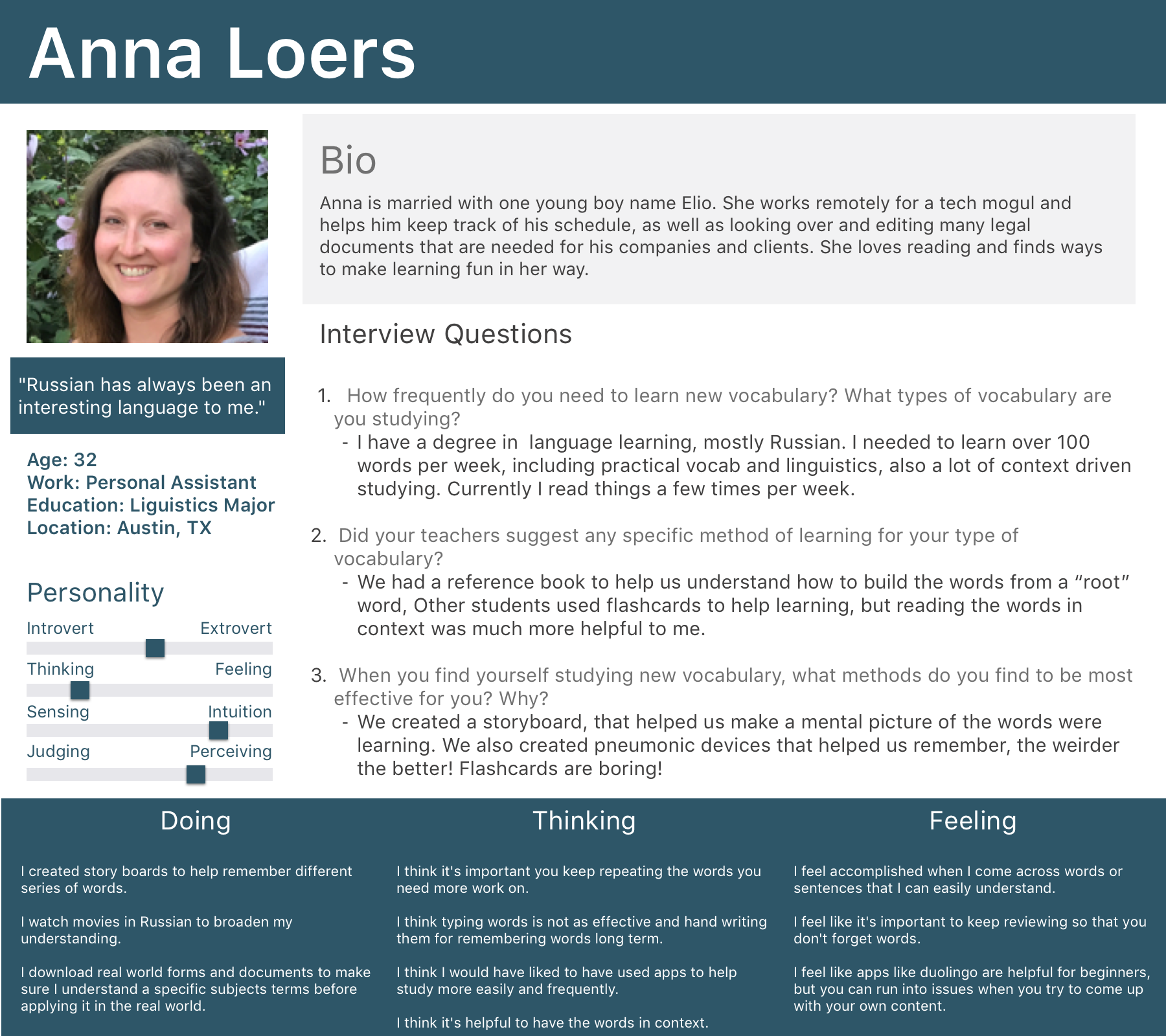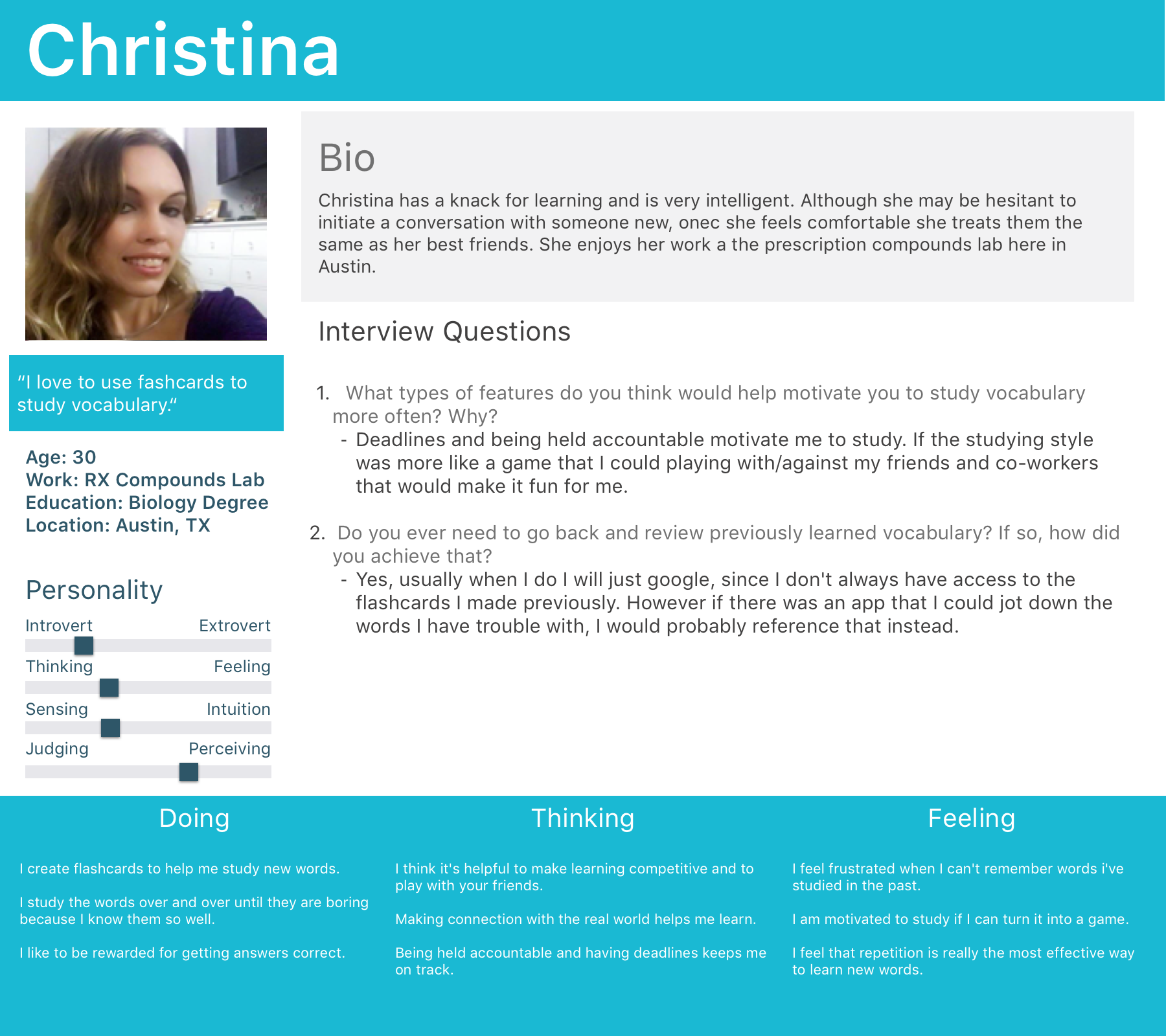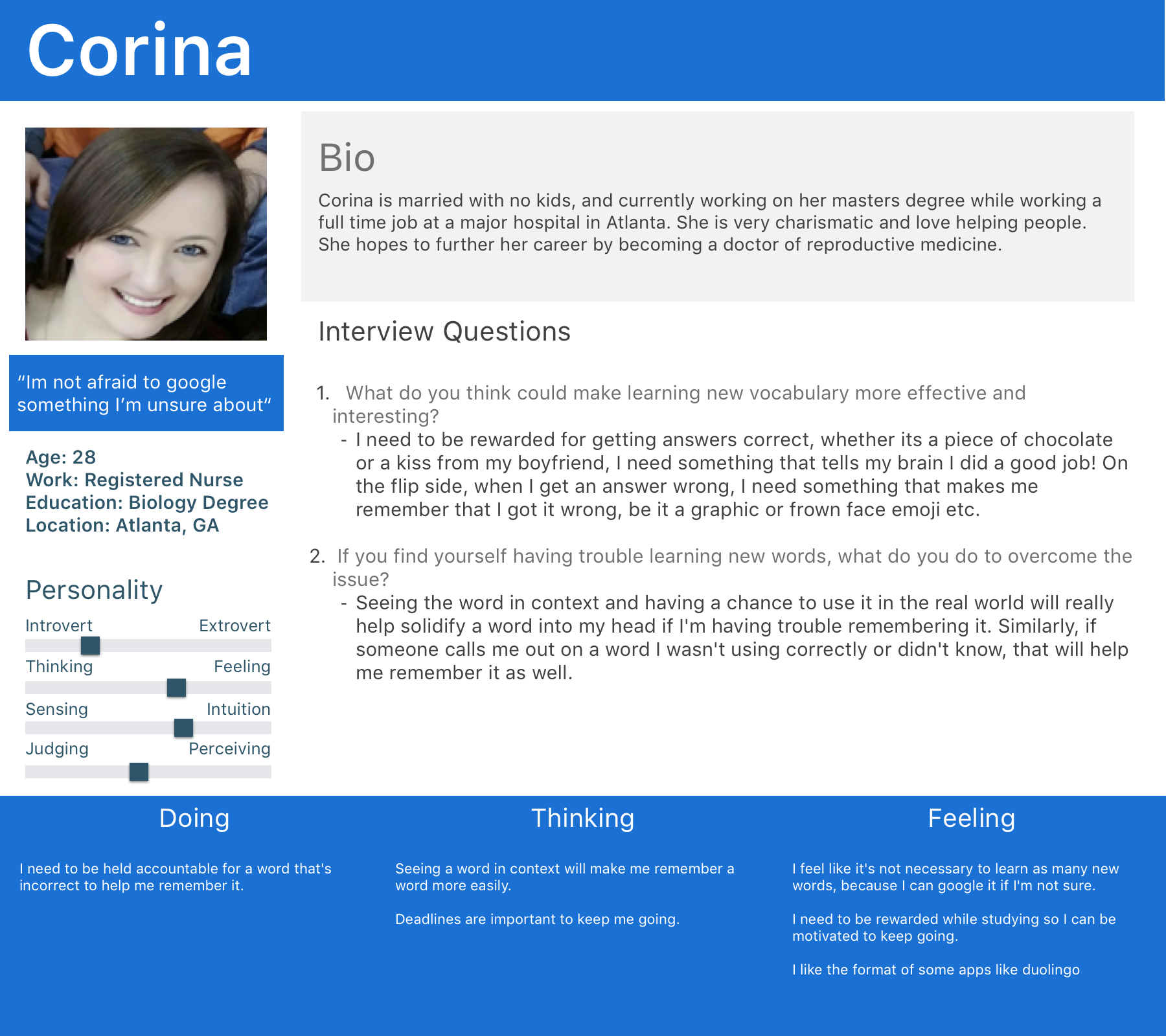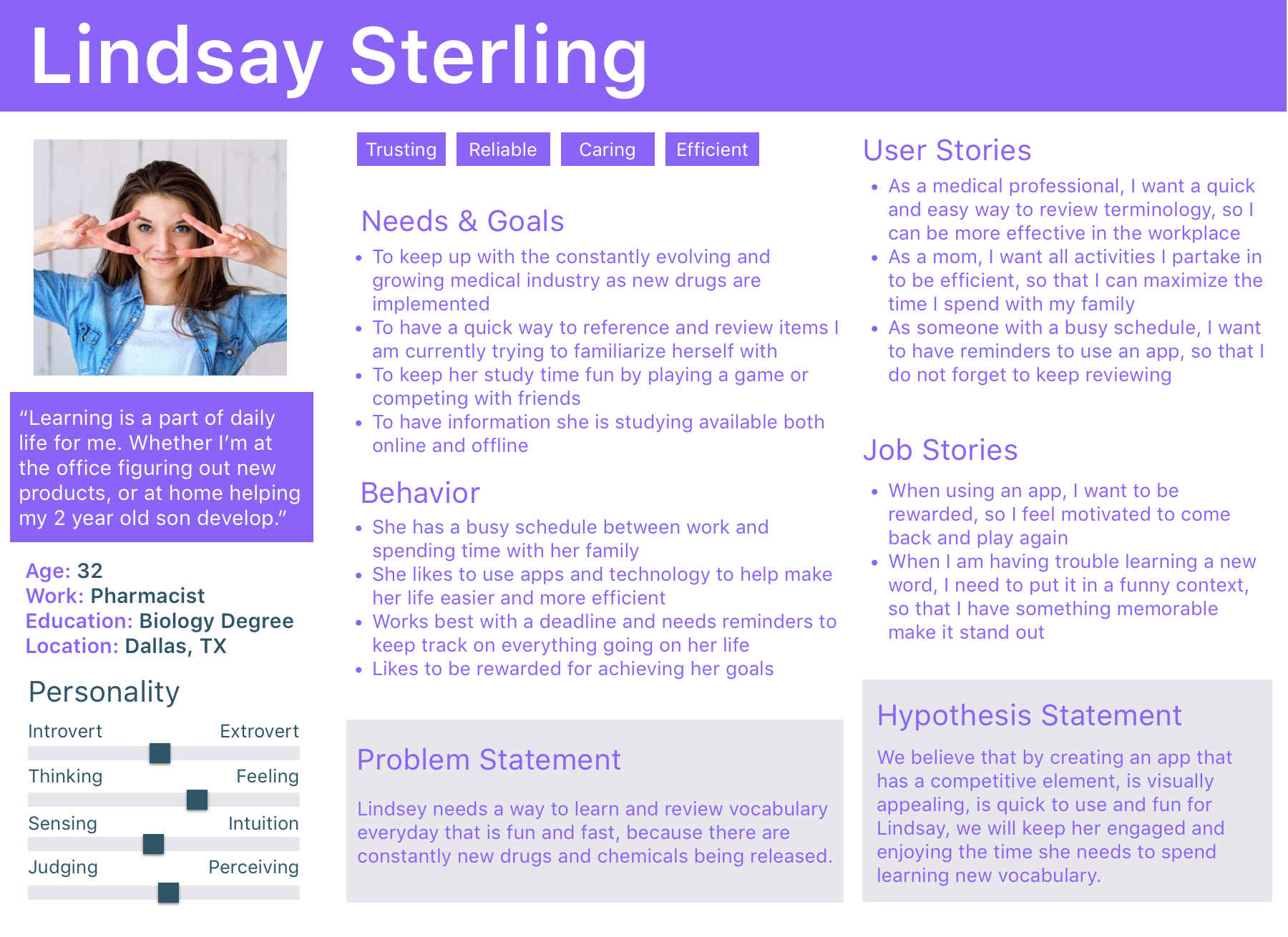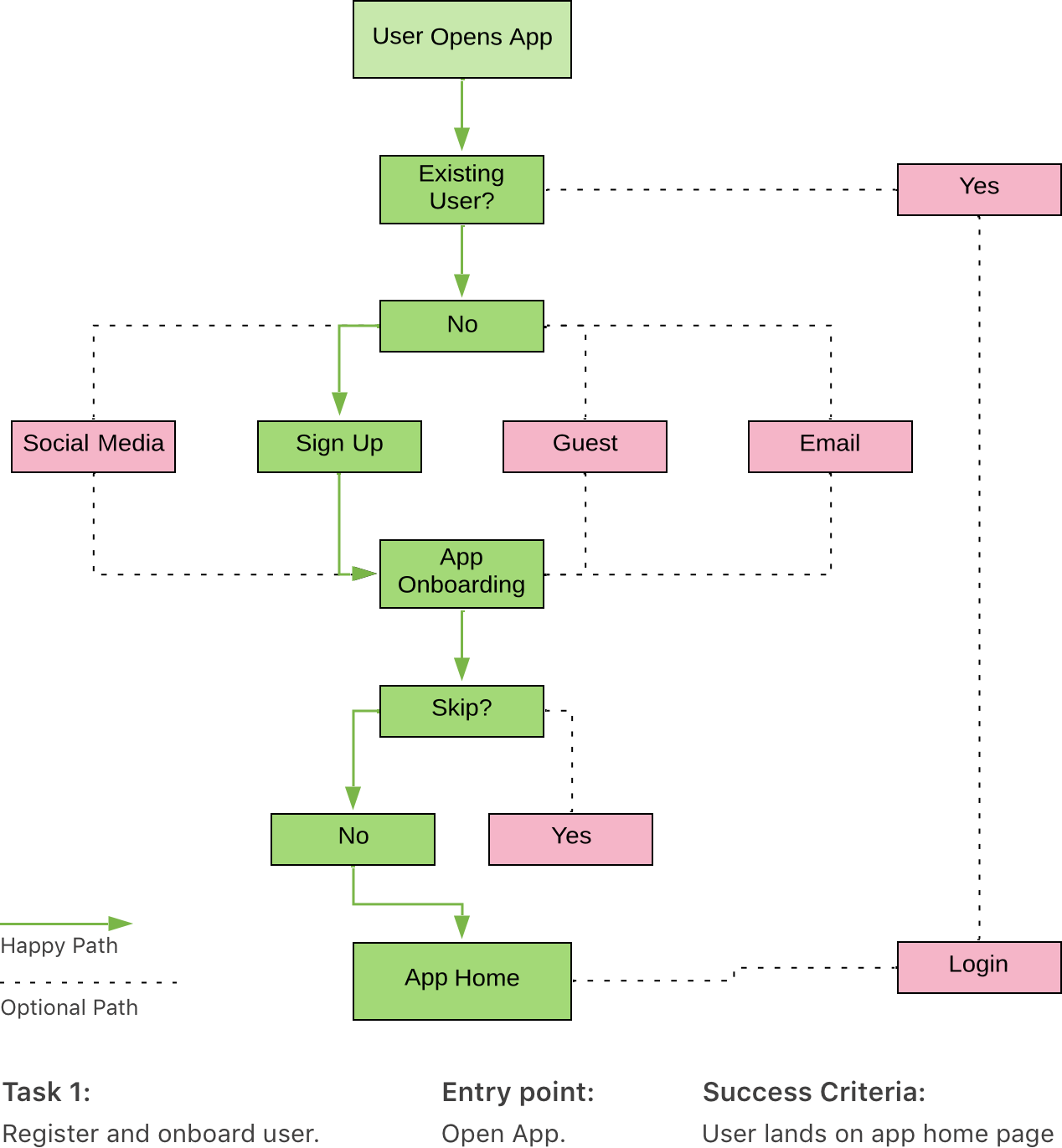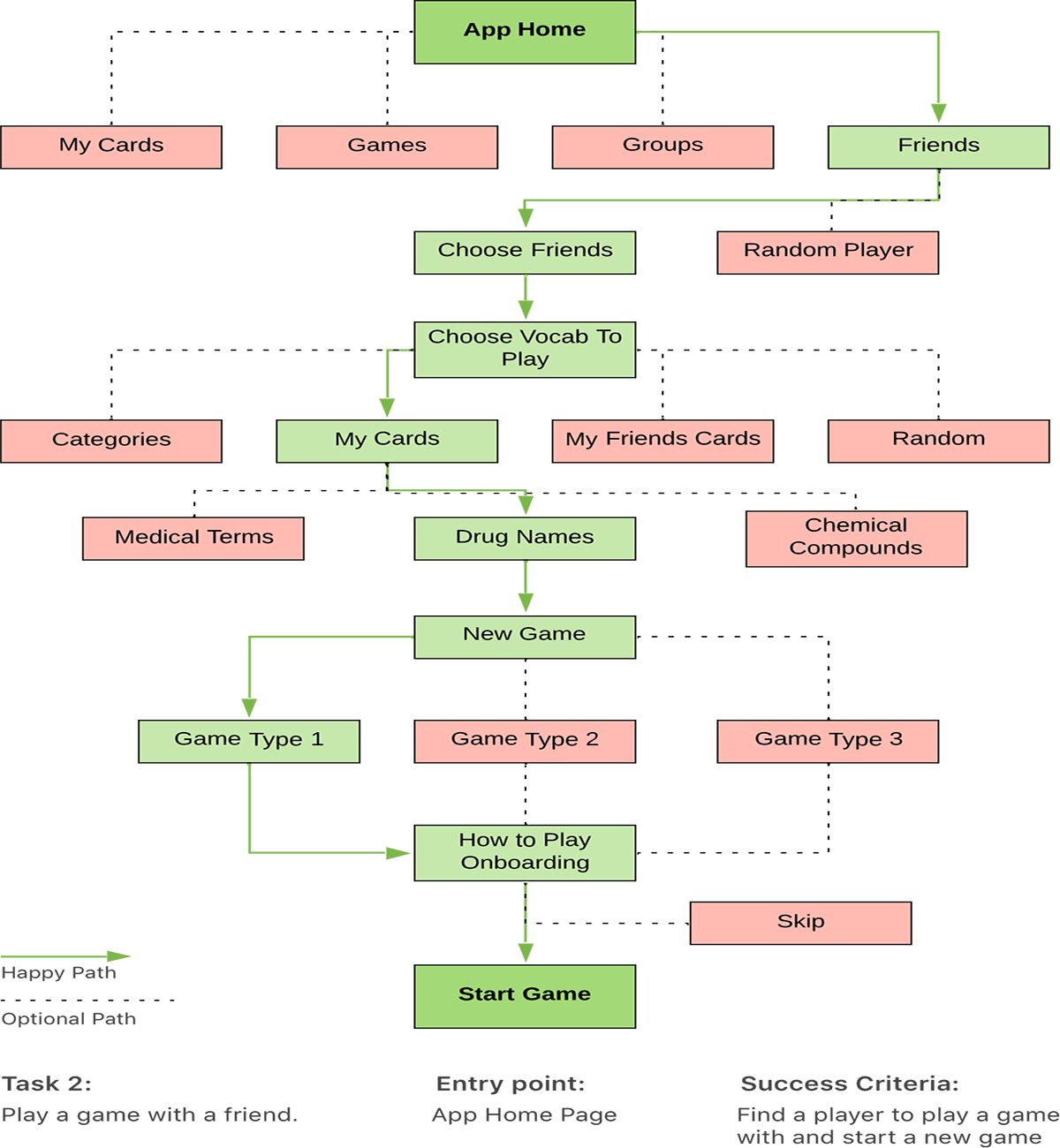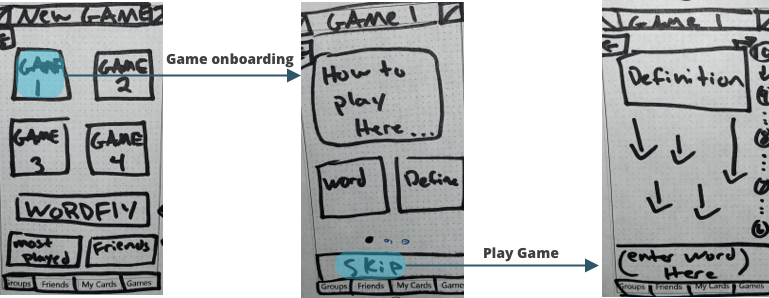User Research and Interviews
To get to know who may be using an app to brush up on their vocabulary skills, I performed several user interviews to see what features target users may need to help them get the most out of their study time.
Meet Anna, Christina, and Corina
Anna - "Seeing new words or words I've had trouble with in context is very helpful and motivating when you are learning new words"
Christina - " I am a very competitive person, so if I could compete with my friends, that would make it more fun for me (think words with friends)."
Corina - "I need to be rewarded for getting answers correct, whether its a piece of chocolate or a kiss from my boyfriend, I need something that tells my brain I did a good job! "
Each participant was asked the following questions:
- How frequently do you need to learn new vocabulary? What types of vocabulary are you studying?
- Do your teachers suggest any specific method of learning for your type of vocabulary?
- When you find yourself studying new vocabulary, what methods do you find to be most effective for you? Why?
- What do you think could make learning new vocabulary more effective and interesting?
- If you find yourself having trouble learning new words, what do you do to overcome the issue?
- What types of features do you think would help motivate you to study vocabulary more often? Why?
- Do you ever need to go back and review previously learned vocabulary? If so, how did you achieve that?
Although only a few responses are shown below for each user, all users were asked all 7 interview questions.
